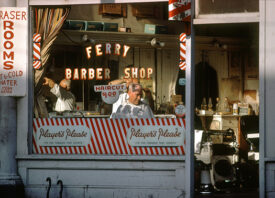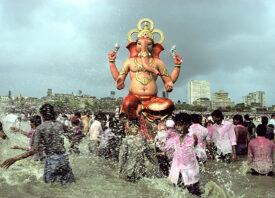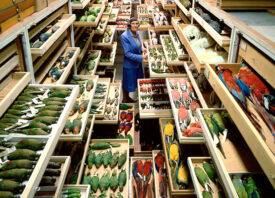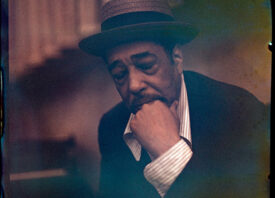Search this site
How Kodachrome Film Changed the History of Photography

In the 1950s and 1960s, Fred Herzog used it to photograph the streets of Vancouver. Raghubir Singh used it to capture life in India in vibrant color. In the 1980s and ’90s, Steve McCurry brought it with him on his travels. At around the same time, Luigi Ghirri was using it to document everyday life in suburban Italy. In this collection of artists, we revisit the emergence of Kodachrome—”King Kodachrome,” as Singh called it—a color reversal film that made history.

A Treasure Trove of Photos from Vancouver in the 1950s and 1960s
The Vancouver of the 1950s and 1960s has vanished. The wooden houses have been replaced by concrete, and the wide streets have narrowed and filled. But before Vancouver changed, it was photographed in color by Fred Herzog.
A solid decade before Sternfeld, Eggleston, Misrach, and Shore, Herzog’s choice of positive color film was an odd and prophetic one. Until the mid-1970s, black and white was obvious and common choice, but Herzog didn’t fall prey to that pretension. Explore more in the book Fred Herzog / Modern Color by Hatje Cantz.

The Man Who Made History by Photographing India in Color
In the late 1960s and early 1970s, Raghubir Singh (1942-1999) secured his position as one of the early serious photographers to work in color. At the time, Kodachrome slide film was not generally accepted by his contemporaries in Europe and the United States, but Singh felt it was necessary to his life and purpose as a photographer of India.
Unfortunately, it wouldn’t be available in his home country until trade restrictions were lifted in the early 1990s. In the meantime, Singh relied on magazines overseas, including National Geographic, to provide him with the precious film he had nicknamed “King Kodachrome.”

Steve McCurry’s Unforgettable Photos of India, Shot Over Three Decades
In 1978, a 28-year-old Steve McCurry embarked on his first journey to India. At the time, he wasn’t photographing in the vivid color that defined the majority of his career but in black and white. It was the country itself, he suggests, that propelled his transition into Kodachrome. He went through hundreds of rolls in that first visit.
McCurry came to know the cities, the villages, the temples, and the holes in the wall by traveling throughout India by rail, stopping to preserve people and places to which he felt instinctively drawn. He woke before dawn and continued shooting long after the sun went down and his legs grew wary.

The Fantastical World of Luigi Ghirri
In 1978, Luigi Ghirri self-published Kodachrome, a landmark book republished by MACK on the 20th anniversary of his passing. Known for his wit and avant-garde sensibility, the Italian artist transformed the mundane into the surreal through his creative use of color and cropping. Colazione sull’erba, also published by MACK, focuses on the photographs he made in the suburbs of Modena.



